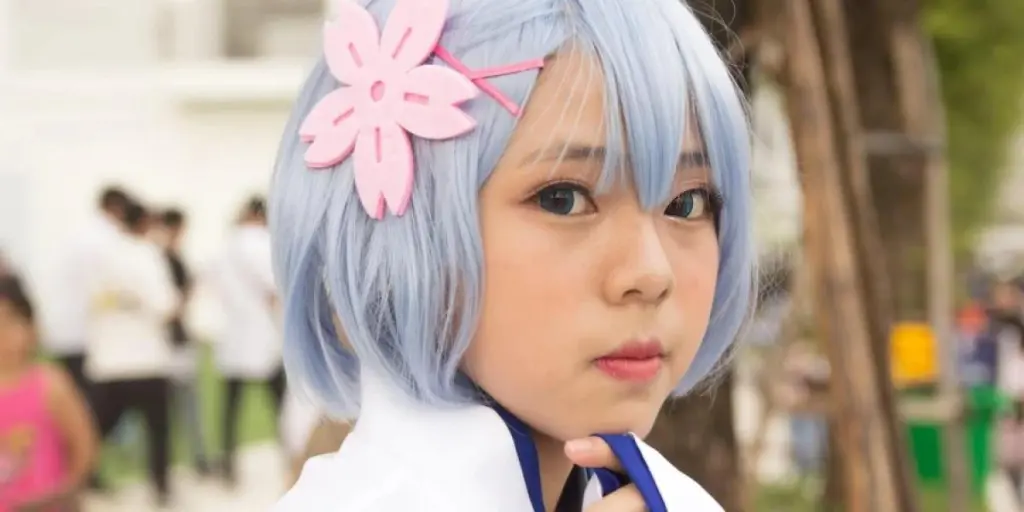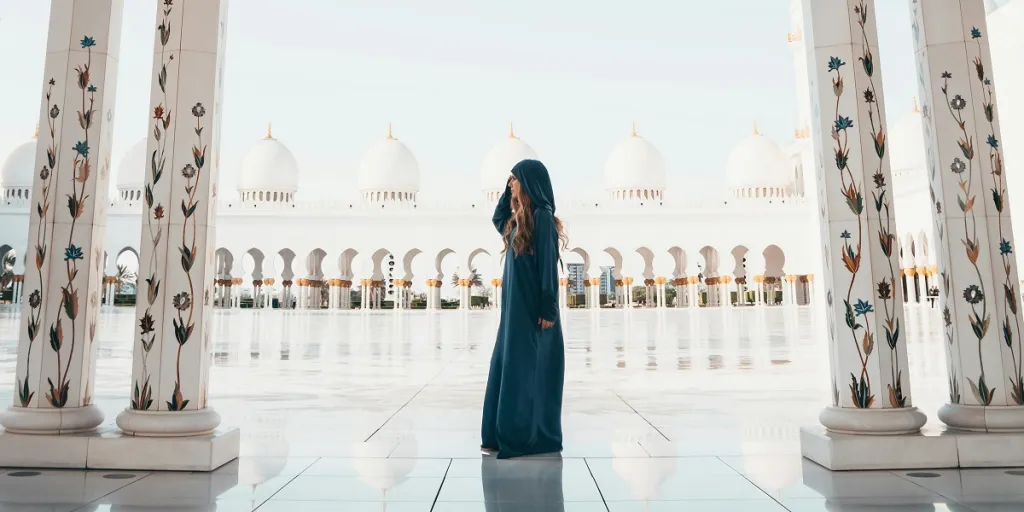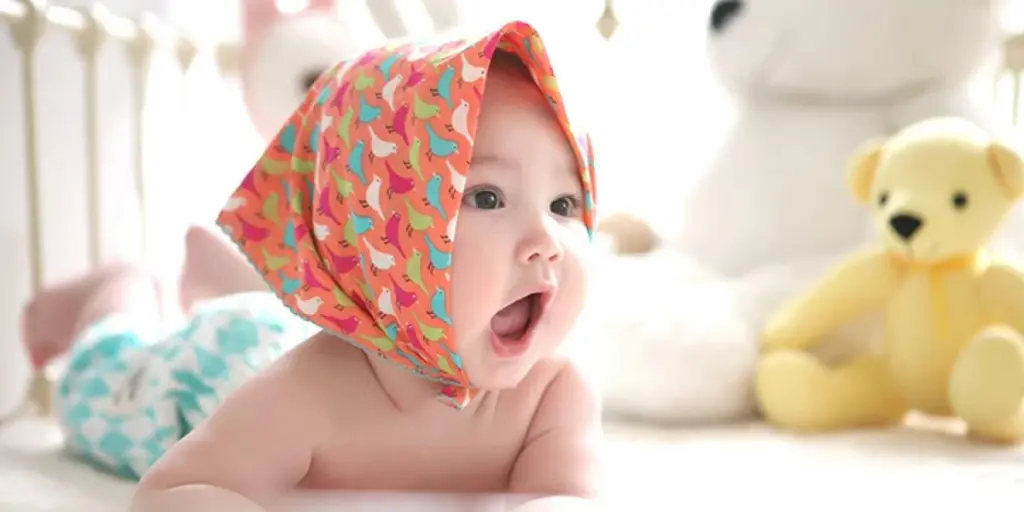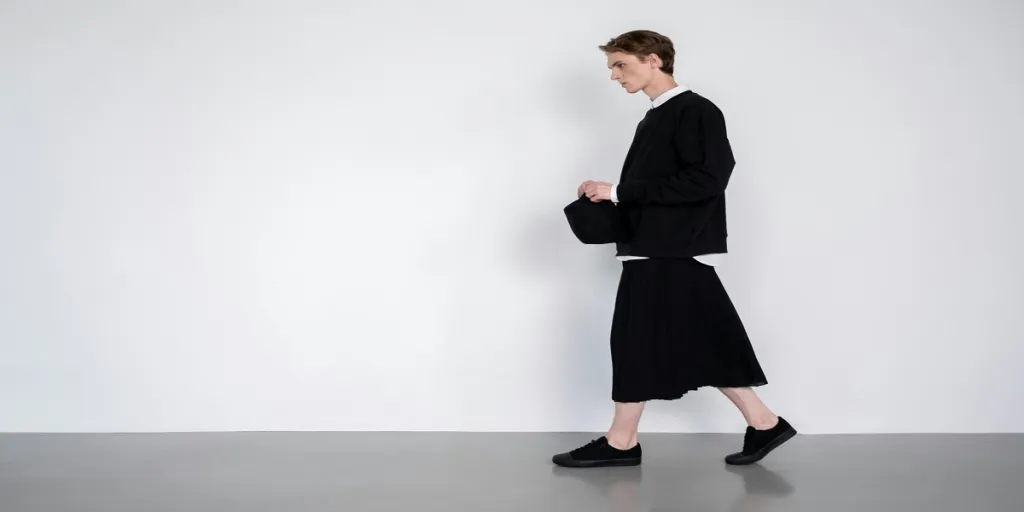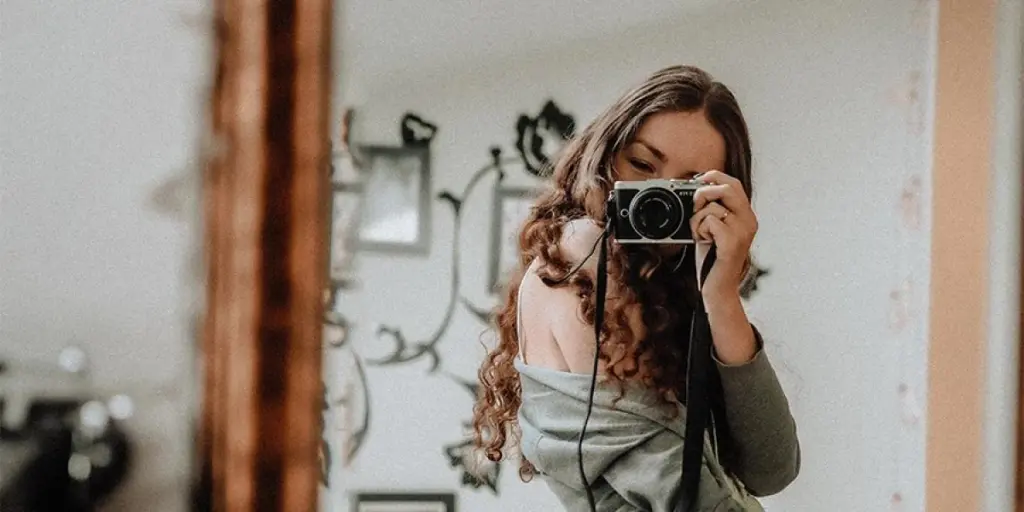Hair clips have become a principal accessory in everyday outfits, with customers of all ages and backgrounds incorporating them into their daily looks. From simple to more intricate designs, hair clips offer many customization and personalization options for sellers and buyers alike.
Therefore, businesses that key into this growing trend can attain rewarding sales by offering high-quality, stylish hair clips to a wide range of customers.
This article provides a comprehensive guide on making beautiful hair clips and five hair clip designs with excellent profit potential for vendors in the industry.
Table of Contents
Is the hair clip industry profitable in 2023?
8 steps for making hair clips this season
5 hair clips retailers can add to their inventories
Closing words
Is the hair clip industry profitable in 2023?
Statistics reveal that the global hair accessories market is anticipated to reach US $31.6 billion by 2028, growing at a compound annual growth rate (CAGR) of 7.7% from 2021–2028. Market expansion is driven by factors such as the fast development of manufacturing technologies, progressive fashion trends, and the availability of a broad range of hair accessories that are both functional and attractive.
An inspection of the product market segmentation reveals the elastic and ties segment to be the highest shareholder in 2020, accounting for 32.3% of the total revenue. This segment growth is fueled by the availability of various products that both accessorize an outfit and support a hairdo.
These products were previously made with leather or rubber; however, thanks to enhancements in production technologies, other fabrics, such as mesh and silk, are used to create better products.
Regarding distribution channels, the offline sector held the highest share of 47.8% in 2020. The segment is anticipated to remain dominant since consumers prefer to purchase hair accessories from small general shops and retail stores.
However, the online sector is set to register a compound annual growth rate of 8.2% during the forecast period as consumers’ shopping behavior continues to change with the rising popularity of e-commerce.
The convenience and ease of accessibility of e-commerce stores, with attractive discounts and safe payment and delivery options, greatly enhance the segment’s growth.
Asia-Pacific continues to dominate other regions, with over 38.3% in revenue as of 2020. The expanding number of working women in countries like India, Indonesia, and China has skyrocketed demand in the region.
Europe follows closely with an expected CAGR of 7.7% during the forecast period. Changing fashion trends and personal style statements in the region are upsurging consumer demand for hair clips and pins.
The high demand for hair accessories by female students in Europe is also anticipated to fuel market growth, especially for elastics and ties hair accessories.
8 steps for making hair clips this season
Hair clips can be made of plastic, metal, wood, and fabric. The material choice depends on the desired style, consumers’ hair type, and personal preferences.
Plastic hair clips are lightweight and more affordable, while metal hair clips are more robust and are suitable for thick hair. They are also available in different finishes like gold, silver, and rose gold which can add a touch of elegance to the wearer’s hairstyle.
Wooden hair clips are eco-friendly and are becoming a choice for environmentally aware individuals. However, they may not be strong enough for thick hair.
On the other hand, fabric hair clips are gentle on the hair and usually add a pop of color or pattern to the hairstyle. They are best for thin to medium hair.
1. Cut the material
After selecting the material, It’s time to mark out and cut the desired hair clip dimension (length and width). Again, the cutting technique may differ based on material and equipment.
One cutting tool retailers can use for perfect cuts is a handheld laser. Also, they can use 3D machines for deeper cuts and specific detailing.
2. Get the preferred shape

One way for retailers to get the desired shape is by using a hair clip mold. Alternatively, they can use wires to create the basic forms of the hair clips before wrapping them with ribbon or fabric for the final look.
Additionally, sellers can use 3D printers to model and design custom hair clip molds.
3. Make the clips smooth with polishing
Polishing is an integral part of the making process. It can remove any unwanted material from the hair clip and improve appearance.
Interestingly, it also increases durability by preventing imperfections that can cause damage or break over time. Moreover, unpolished hair clips may have sharp edges that can poke or injure the customer.
4. Soak them in acetone
Acetone is a strong solvent that dissolves adhesives and coatings. Soaking hair clips in acetone can easily remove any residual glue or coating, leaving the product clean and ready for the next stage.
It is critical to follow safety precautions when working with acetone as it is highly flammable and volatile. Also, sellers must ensure they do this procedure in a well-ventilated area and wear gloves to avoid contact with skin.
5. Dye the materials
Colors add visual interest to hair clips, making them more attractive and appealing to customers. Dyes can also create specific patterns and designs, further enhancing their beauty.
Brands may use different dyeing methods depending on the hair clip’s material and the desired outcome. For instance, they can dye fabrics with traditional procedures (like immersion) or the more modern injection molding for plastics.
6. Engage in hand polishing
Hand polishing helps to remove any more unevenness and blemishes with a high potential for damage and irritation. It also highlights a hair clip’s color and shine, increasing its attractiveness.
7. Customize if necessary
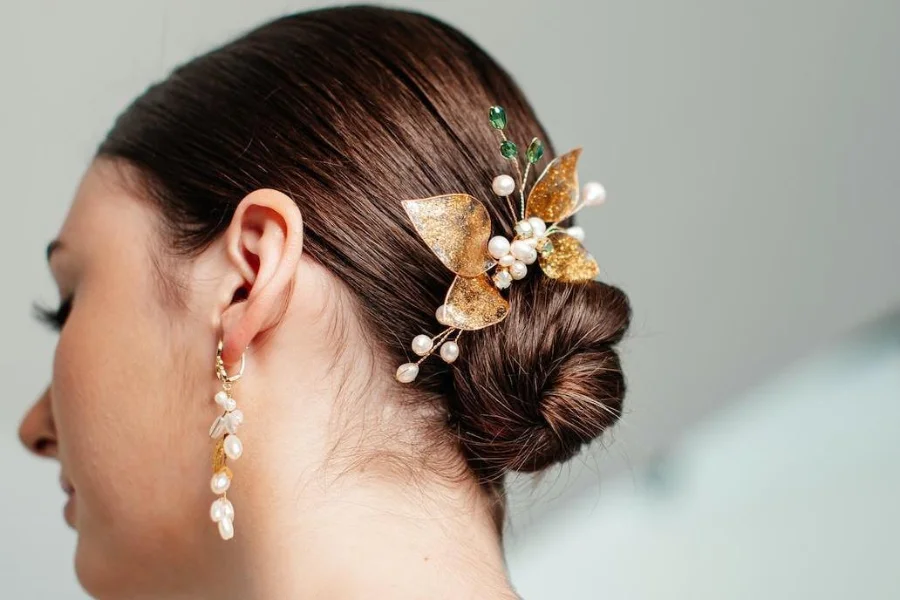
Embellishments and further details can enhance the hair clip’s look, making it more attractive. Businesses can run wild with flowers, pearls, and glitter or opt for more intricate connections.
Engraving customers’ initials, personalized messages, and any other custom designs can also represent a high level of customization.
8. Do the crystal work and add the hinge
The last step of the hair clip-making process is adding the hinge and doing the crystal work if necessary. Businesses can also add their logo and other branded features to the item.
Use good quality crystals and steel hinges that can withstand the rigor of everyday use. Use strong glue explicitly designed for crystals and hair accessories, and allow the glue to dry well before testing.
5 hair clips retailers can add to their inventories
1. French hair clips
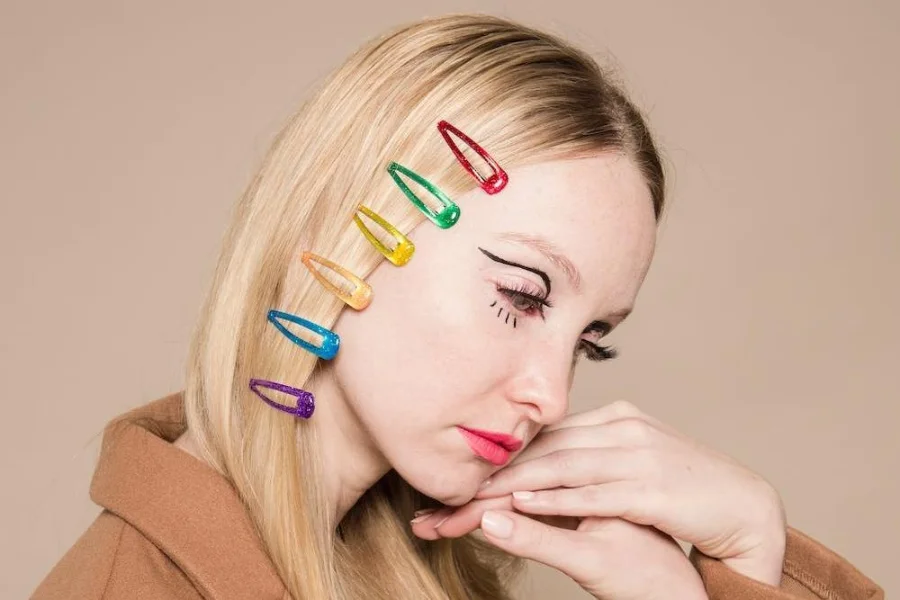
French hair clips originated in France in the early 20th century and are known for their versatility and style. They are typically metal or plastic, with a hinged clasp securing hairdos in place effortlessly.
Retailers can sell them in many styles and sizes with adornments such as crystals, pearls, and other decorative elements. Some are also kept simple and sleek for a more understated look.
Consumers will find these classic hair accessories helpful in controlling unruly hair and adding a touch of elegance to a casual hairstyle. These hair clips are functional and sophisticated, from half-down-half-up hairdos to elegant updos.
2. Banana hair clips
These hair clips typically have curved shapes, like a banana. They are ideal for securing hairdos during workouts and other physical activities.
Banana hair clips work for every hair type, making them an excellent choice for a large customer base. In addition, sellers can offer them in different sizes, styles, and embellishments.
3. Butterfly hair clips
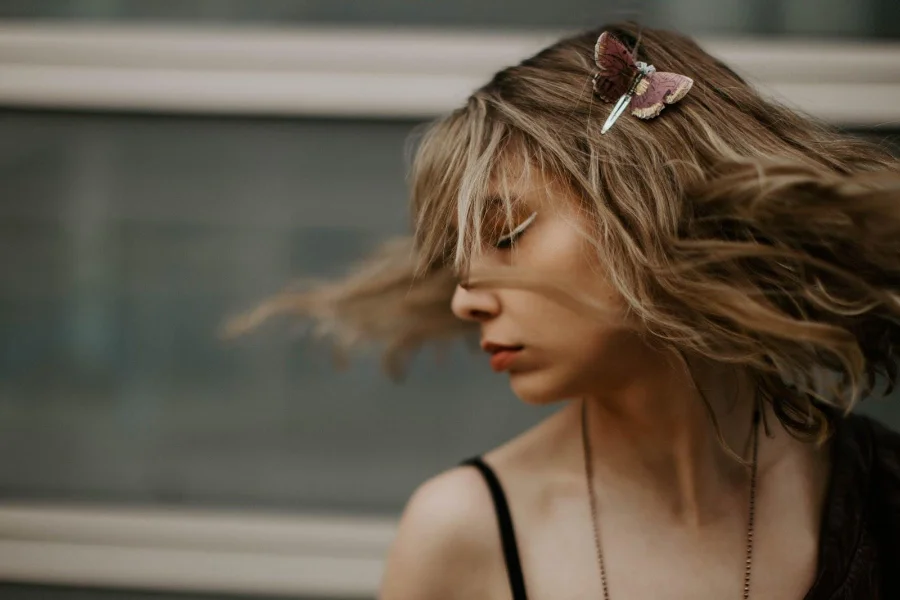
Butterfly hair clips add a playful and cheerful touch to any hairstyle, making them an excellent choice for children and teens. However, anyone can wear them to add a fun and whimsical look to their outfit.
They are handy for holding smaller sections of hair or accentuating larger hairstyles. In addition, brands can add various sizes and colors to their inventory to offer shoppers more variety when styling their hairdos.
4. Claw clip
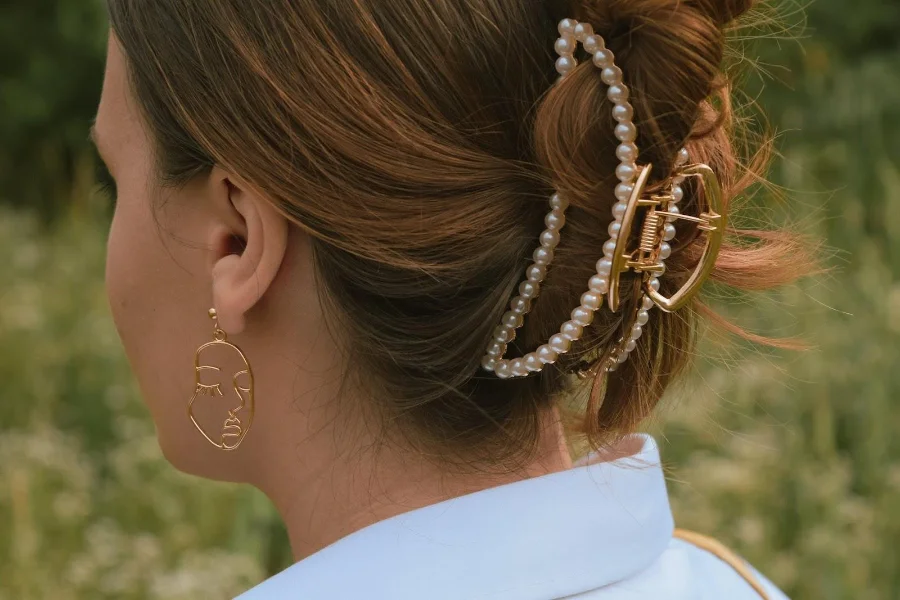
Claw hair clips typically have curved, claw-like designs, are usually made of plastic or metal, and come in different sizes and colors.
Hairstyles like ponytails and pigtails or more intricate updos are compatible with claw clips. Their grip also provides a stronger hold than other hair clips, making them particularly useful for thick and curly hair.
Moreover, some claw hair clips have spring mechanisms allowing them to open and close quickly.
5. Mini hair clips
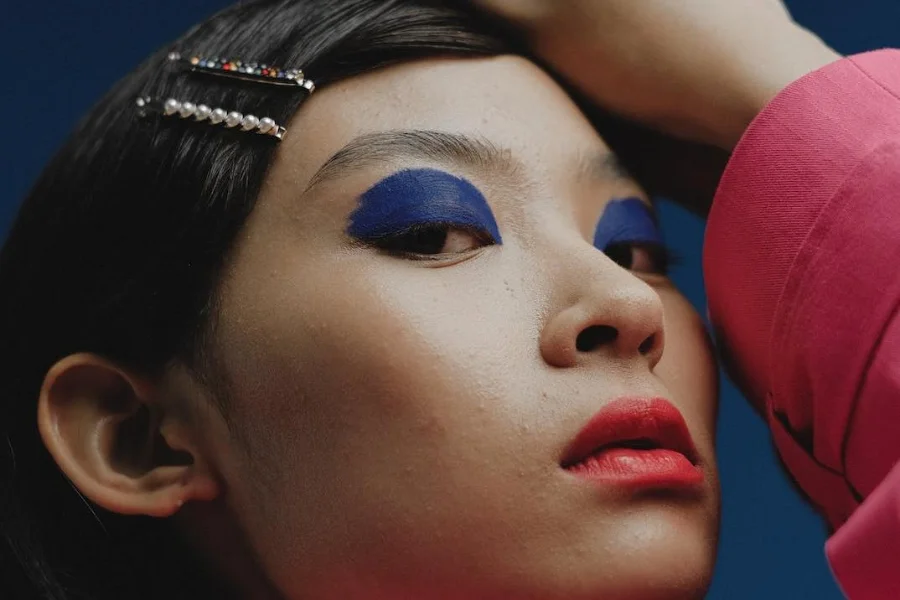
Mini hair clips are tiny, compact accessories for securing small hair sections. They are ideal for consumers with short hair.
In addition, their small sizes make them convenient and easy to carry around, making them perfect for on-the-go styling.
Closing words
Hair clips are popular and stylish, and lucrative accessories for brands and businesses. Hence, sellers can create high-quality and unique hair clips to attract a large customer base. They can even establish themselves as top-tier hair accessories makers if they make the right choice picking some of the hair clip trends listed in this article.
